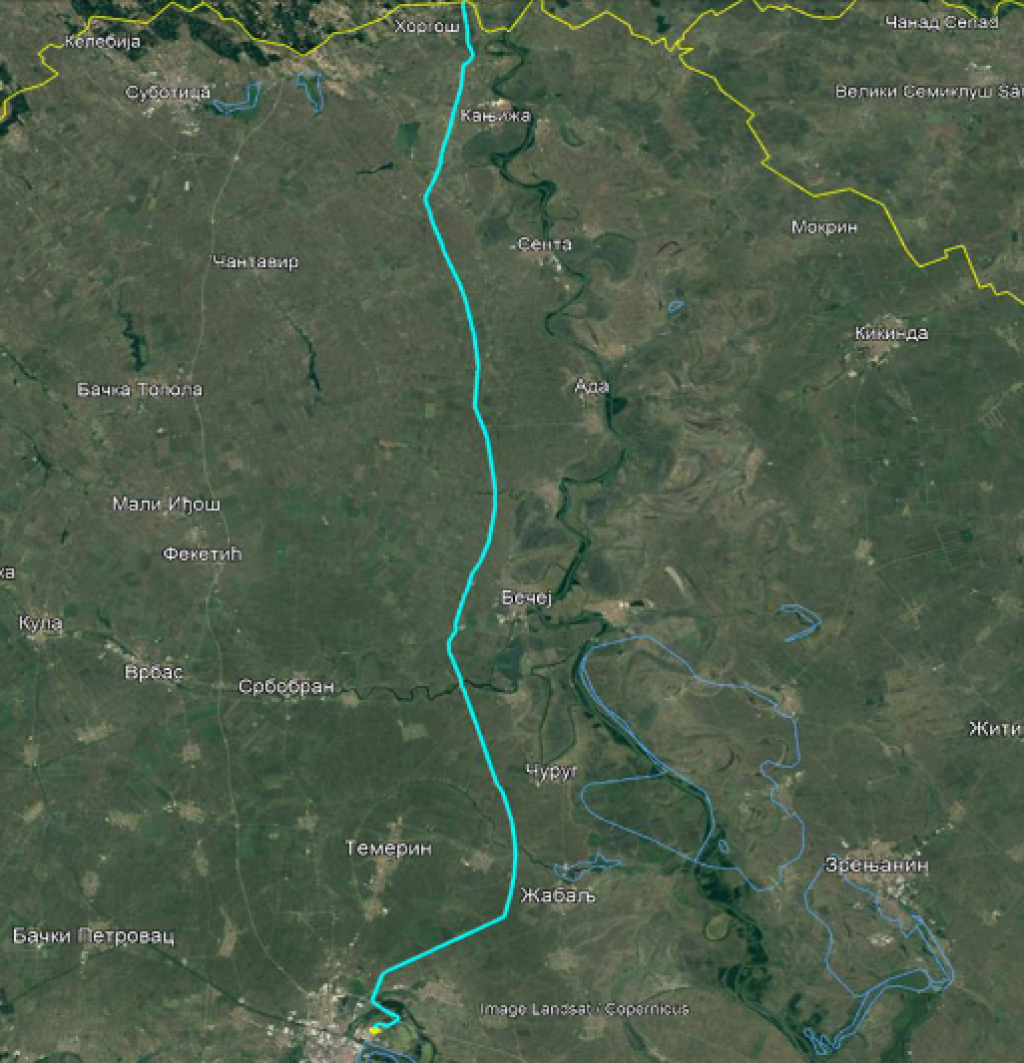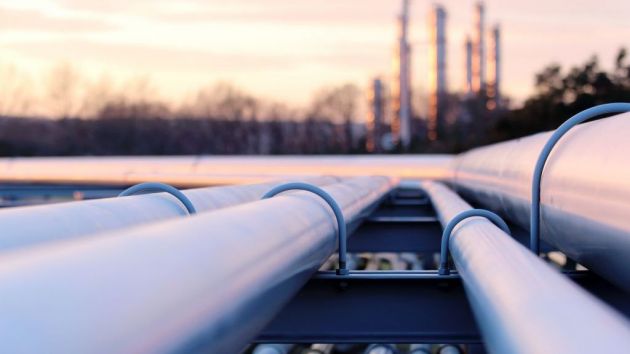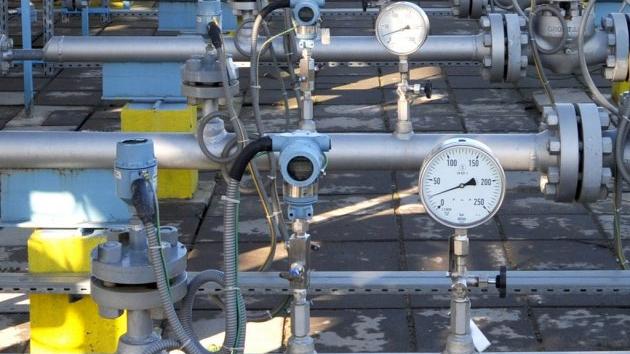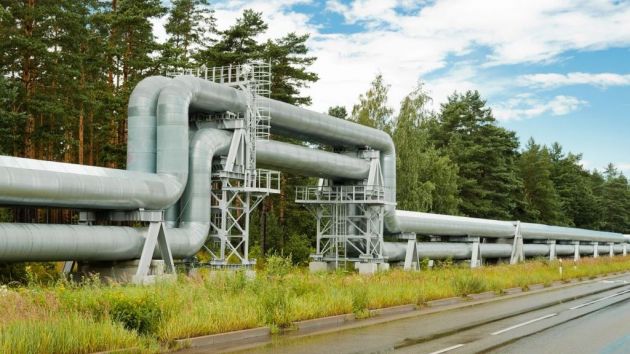Up to 5.5 Million Tons of Oil a Year from Druzhba for Serbia by 120 km Long Pipes – Looking for Designer for Oil Pipeline from Hungary to Novi Sad
Source: eKapija
 Wednesday, 06.12.2023.
Wednesday, 06.12.2023.
 12:35
12:35
 Wednesday, 06.12.2023.
Wednesday, 06.12.2023.
 12:35
12:35
(Photo: Transnafta, tenderska dokumentacija)

The specification of the job reminds that Serbia is currently supplied with crude oil from one direction only, through Croatia and their transport system Janaf d.d., but that the Spatial Plan of Serbia envisages for other oil pipeline supply routes to be considered to the end of the diversification of the transport of crude oil and energy security.
– The route from Hungary has been taken into consideration, because the Druzhba oil pipeline, which supplies a major part of Europe, goes through its territory. The construction of a new oil pipeline toward Hungary will enable a more secure supply of the local refinery, and with that the local market as well – the tender says.
The interconnection with Hungary is planned near the border crossing Horgos in the municipality of Kanjiza, and the end of the route is at the Terminal Transnafta Novi Sad, with a length of around 120 km.
The planned oil pipeline has an annual capacity of 5.5 million tons a year, and is made of steel pipes with a preliminary diameter (DN) 450, designed for the maximum operating pressure, which will be determined in the phase of the preparation of the preliminary design of the project.
Detailed route
The planned transport concept is such that the crude oil which is transported via the south leg of the Druzhba pipeline from Russia, through Ukraine, to the Hungarian refinery Danube near Budapest, is further pumped from the refinery to Algyo and then transported further from Algyo by pumps to Novi Sad (Terminal Transnafta).
From Novi Sad, the oil is further transported to the Pancevo Refinery via the existing oil pipeline Transnafta.
The display of the route of the future oil pipeline from the Hungarian border to Novi Sad (Photo: Transnafta, tenderska dokumentacija)

In the territory of Serbia, the oil pipeline would stretch from the border with Hungary (Horgos) to the Terminal Transnafta in Novi Sad.
The new oil pipeline would go from the border with Hungary in the gas pipeline corridor Balkan Stream to Gospodjinci, and then further in the oil pipeline corridor US Tisa – Novi Sad.
System description
The oil pipeline will consist of a linear part of the system and aboveground structures. Of the basic aboveground structures, on the route through Serbia, seven block stations, with crossings with important infrastructure facilities and by sections of the oil pipeline, are planned, which secures a controlled and automatic closing of the oil flow.
Entrance and exit cleaning stations with equipment for the introduction of mechanical and intelligent cleaners are planned – the entrance one within the Terminal Transnafta, and the exit one near the Hungarian border. Also, devices for the system of the cathode protection of the linear part of the oil pipeline is planned, which ensures protection from corrosion, as is the principal metering station for the commercial metering of the transported quantities of crude oil, within the Terminal Transnafta in Novi Sad.
Among the other structures in the function of the main oil pipeline, the plan includes electrical energy structures for the supply of electricity to the block stations, an optical cable for remote supervision and control, command centers for remote management of the transport of oil, access roads and systems of supervision and detection of oil pipeline leaks.
Read more:
- New Oil Pipeline from Novi Sad to Hungary Should Connect Serbia with Druzba Oil Pipeline and Secure 5.5 Million Tons of Oil a Year
- Preparation of Project of Construction of Oil Pipeline Serbia-Hungary: Pannonian Corridor for Transfer of Electrical Energy
- Preparations for Construction of Oil Pipeline to Hungary to Begin – Minister Discusses Preparation of Planning and Technical Documentation with Representatives of Transnafta
- Construction of Serbian Section of Serbia-Hungary Oil Pipeline to Cost EUR 157 Million
- Serbia and Hungary Sign Agreements on Construction of Oil Pipeline and Founding of Joint Company for Gas Trade
The tender is open until January 11, and other details (in Serbian) can be found HERE.
Let us remind that the story of connecting Serbia to the Russian oil pipeline Druzhba started last autumn, after the announcement of the halt of the delivery of Russian oil by Janaf upon the adoption of the eighth package of EU sanctions, according to which the countries of the Western Balkans are not exempt from the ban on the import of crude oil from Russia by sea.
The Ministry of Mining and Energy of Serbia announced at the time that it was looking into all the options of securing diversification regarding the supply of crude oil.
In May this year, at the 13th session of the Joint Commission for Economic Cooperation of Serbia and Hungary, the decision on the construction of an oil pipeline from Algyo in Hungary to Novi Sad, which would be built by the Hungarian MOL and the Serbian Transnafta, was adopted.
Later on, in June, the Ministry of Mining and Energy of Serbia and the Ministry of Foreign Affairs of Hungary signed the Memorandum of Understanding on the construction of the oil pipeline.
At the beginning of November, the relevant minister, Dubravka Djedovic Handanovic, stated that the Serbia-Hungary oil pipeline would be built by 2028.
The estimated value of the project of the construction of the Serbia-Hungary oil pipeline is EUR 157 million for the Serbian oil pipeline section.
B. P.
Tags:
PE Transnafta Pančevo
Ministry of Mining and Energy
oil pipeline Hungary Serbia
Druzhba oil pipeline
JANAF
construction of an oil pipeline
designing of an oil pipeline
Comments
Your comment
Most Important News
Full information is available only to commercial users-subscribers and it is necessary to log in.
Follow the news, tenders, grants, legal regulations and reports on our portal.
Registracija na eKapiji vam omogućava pristup potpunim informacijama i dnevnom biltenu
Naš dnevni ekonomski bilten će stizati na vašu mejl adresu krajem svakog radnog dana. Bilteni su personalizovani prema interesovanjima svakog korisnika zasebno,
uz konsultacije sa našim ekspertima.


 Izdanje Srbija
Izdanje Srbija Serbische Ausgabe
Serbische Ausgabe Izdanje BiH
Izdanje BiH Izdanje Crna Gora
Izdanje Crna Gora


 News
News











